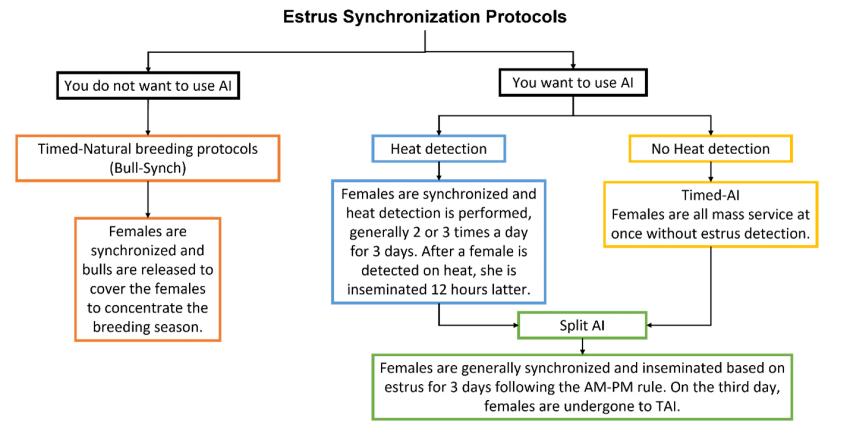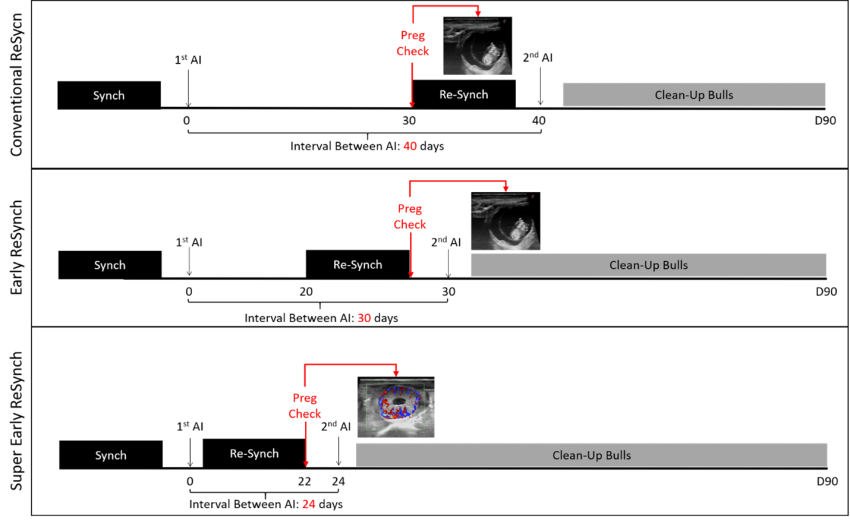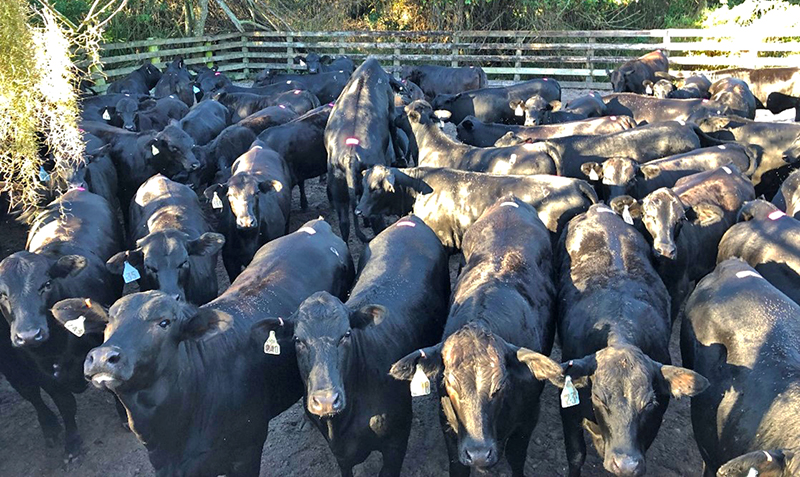
There are currently a number of estrus synchronization protocol options available for beef cattle operations. Selecting the best option for your operation depends on the level of management available. Credit: Angela Gonella, UF/IFAS.
Dr. Angela Gonella, UF/IFAS Cattle Reproduction Specialist, North Florida Research and Education Center, and Dr. Thiago Martins, Mississippi Cattle Reproduction Specialist, Brown Loam Research Station
The adoption of estrous synchronization programs for beef cattle herds has increased over the last decade. The main advantages of these programs include: 1) Facilitate the propagation of better genetics into the herd via artificial insemination (AI); 2) Hasten estrous cycling in post-partum cows; 3) Stimulate earlier attainment of reproductive maturity for 12 to 14 month old heifers, and 4) Tightening of the calving season (for more details, please review my article in March 2020 issue of The Florida Cattleman and Livestock Journal).
=
There are currently a number of estrus synchronization protocol options available through the Beef Reproduction Task Force’s 2022 Beef Cattle Synchronization Protocols, which can sometimes be confusing for producers. Although all programs work well, the purpose of this of this article is to clarify the differences between pre-synchronization, synchronization, and re-synchronization, and between artificial insemination (AI) and timed-AI (TAI), while offering guidance for your decision making.
–
Artificial Insemination: Yes or No? Heat detection or Timed Artificial Insemination?
Many times, when I talk to producers in Florida, I hear things like: “Artificial Insemination is not for me” or “I don’t want to do heat detection.” However, producers are unaware the primary purpose of any synchronization program is to reduce or eliminate the estrus detection labor, facilitating the adoption of artificial insemination. In other words, these programs narrow the 21 day-window of service to only a few days, since the females will be coming in estrus in a tight window.
Simplistically speaking, estrus synchronization is a combination of hormones that manipulates the estrus cycle clock for a maximum number of females coming in estrus in a synchronized manner. After adopting one of the protocols, producers can opt to perform insemination based on estrus or timed-AI (TAI) only, or a combination of both. In the case of TAI, the females are all bred at once without estrus detection. Females that do not come into heat after synchronization still get pregnant, but at lower rates (estrus: 65% vs. non-estrus: 35%, personal data NFREC). This means that, when you inseminate only females that you detect in estrus, you would be losing some pregnancies. There are many possible reasons for the non- or low-estrus response after adopting a synchronization programs, such as failure on estrus detection, inadequate response to the protocol, low body condition score and etc. In the Split-TAI protocols, females are inseminated based on estrus following the AM-PM rule for 3 days and with those cattle not showing signs of heat undergoing TAI. Such strategy aims to maximize the proportion of females that are inseminated in heat, at the most appropriate time.
Alternatively, producers have an option to synchronize the females and let the bulls breed them, instead of inseminating. This strategy is known as timed-natural breeding or Bull-synch programs, and it is adequate for commercial herds that are not interested in adopting AI. In this case, the advantage a producer gains from herd synchronization is shortening the breeding season and the subsequent calving season, warranting a more homogeneous calf-crop (Herd Synchronization Can Shorten Your Calving Season).
=
What is a pre-synchronization program, and when should we use it?
A pre-synchronization is a simple version of a synchronization program. The objective of pre-synchronization is to maximize the response to the hormonal treatment given in the second synchronization program. For example, a pre-synchronization can benefit reproductively immature heifers by inducing puberty and enhancing pregnancy rates with the ensuing primary synchronization program.
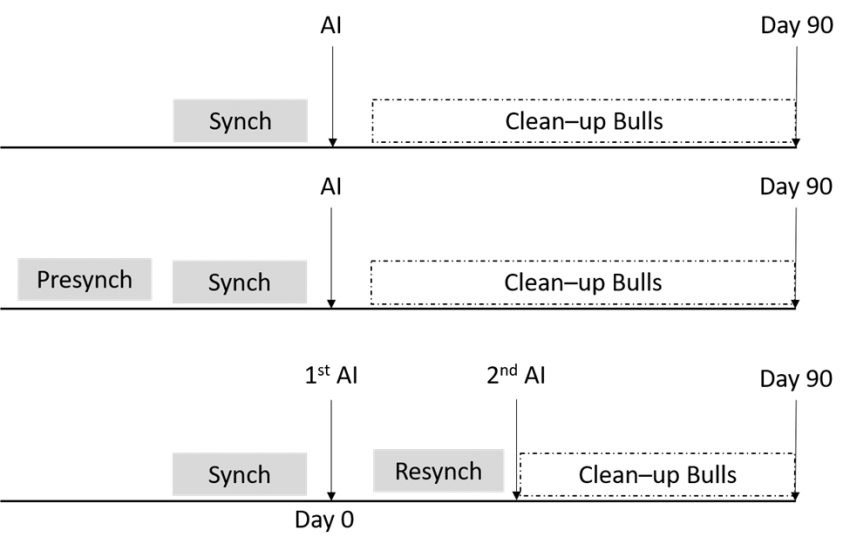
Figure 3: Timeline of a synchronization, pre-synchronization, and re-synchronization program. To access all details about hormones and time for application please access the protocols recommended by the Beef Cattle Reproduction Task force.
=
Nevertheless, the use of pre-synchronization is more common in dairy farms aiming to put the females in the early to middle stage of estrus cycle when more females respond to the program with higher pregnancy rates. When comparing results from presynch+synch protocols with only synch protocols, it is reasonable to find a 5-10% increase in the pregnancy per insemination. The main disadvantage of the pre-synchronization protocols is the increased labor, usually requiring two more passes through the chute.
=
Re-synchronization and when to use it
Re-synchronization protocols consist of a second round of synchronization after the first insemination and pregnancy check, in this way, a second insemination could be performed in the open females. It is a popular strategy among the most progressive producers that want to increase the proportion of females pregnant by insemination. Considering that average pregnancy rates for AI are 40-50%, two rounds of AI would provide ~75% of calves from artificial insemination, born during the first 30 to 40 days of the calving season.
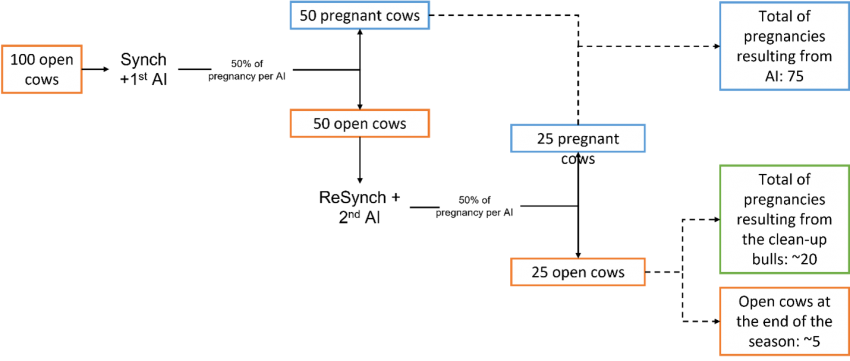
Figure 4. Increase the number of calves’ product of insemination by using a re-synchronization program
=
There are many strategies to perform re-synchronization, and I promise to write a future article to talk about them. The next figure will give you an idea of the current re-synchronization strategies available.
=
In the conventional re-synchronization protocols, the program only starts after identifying the open females. The females have to be pregnancy check by ultrasound to accurately detect pregnancy at 28 to 30 of age. The time interval between the first and second insemination using this protocol is 40 days.
In the early re-synchronization program, independently of pregnancy status, all females are synchronized between day 22 or 23 of pregnancy by receiving a dose of GnRH and CIDR insertion. On day 30, after 7 days of CIDR insertion, all females are checked for pregnancy. Pregnant females from the first insemination are dropped out of the protocol. Open females receive a dose of prostaglandin and are inseminated ~72 hours later. The time interval between the first and second insemination using this protocol is 30-32 days.
Finally, the super-early re-synchronization protocol allows 24 days of interval between the first and second insemination. In this program, all the females, independently of the pregnancy status, are re-synchronized 13 days after the first insemination. On day 21, after 7 days of CIDR treatment, a doppler ultrasound is performed to evaluate the blood flow of the corpus luteum (CL). Females with an active CL are considered pregnant, removed from the protocol, and exposed to the clean-up bulls. Females with a regressed CL receive a dose of prostaglandin and are inseminated ~ 72 hours later.
=
Take Home Messages
- The decision-making process to select which reproductive program to use on a farm/ranch should consider the productive goal and the amount of labor required.
- The use of these reproductive programs drastically modifies the calving distribution of the herd. This means that a higher proportion of the calves will be born at the beginning of the calving season.
- If you are interested in implementing any of these reproductive programs in your operation, or if you have any questions about these programs, please contact the extension agent in your county. I will be happy to work with them to help you make the best decision for your herd!
- Heat Stress and its Impact on Cattle Reproduction - March 14, 2025
- Fall is Here.Time for Pregnancy Testing Cattle! - September 13, 2024
- How Stress Impacts Cattle Reproduction - March 15, 2024


